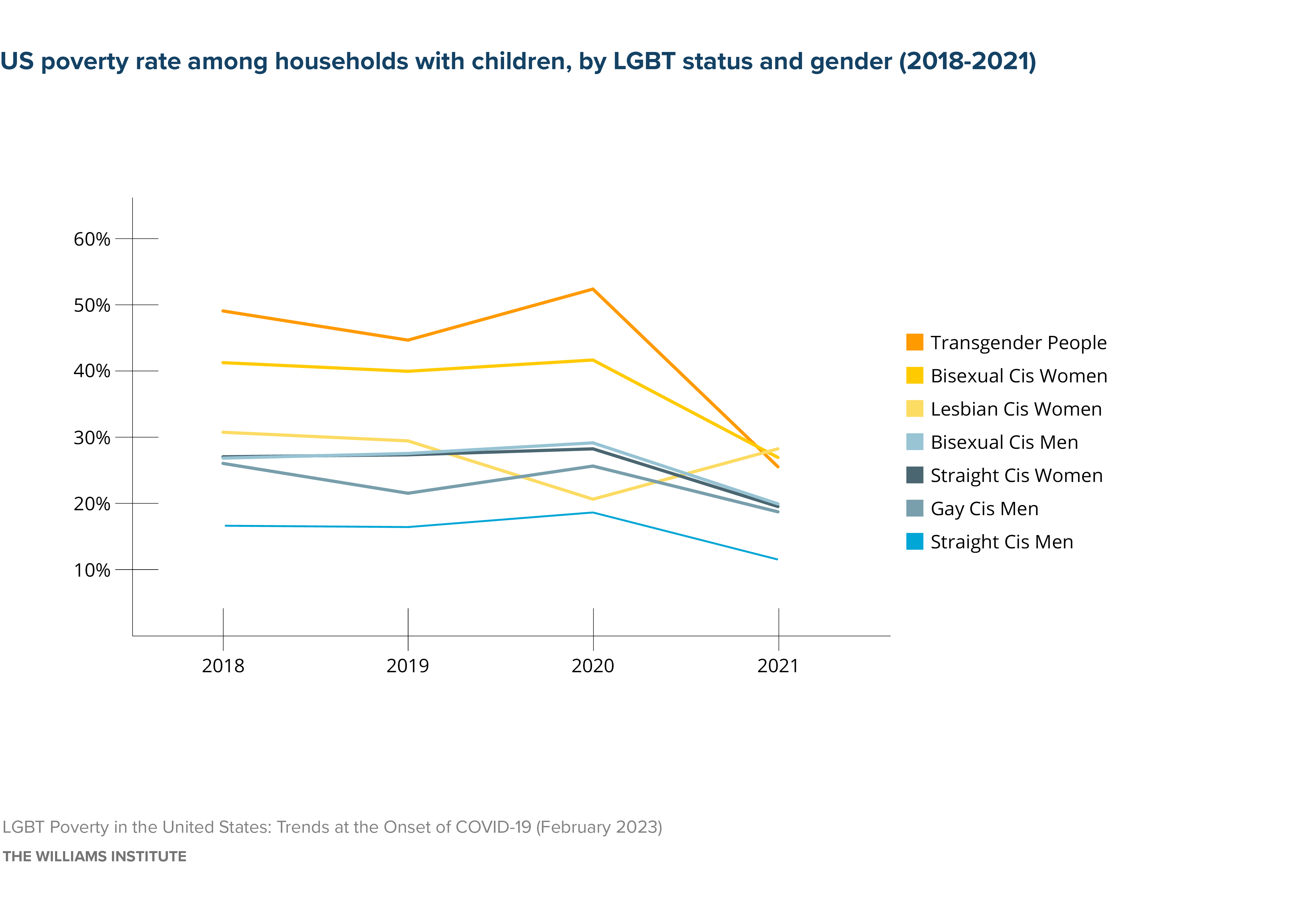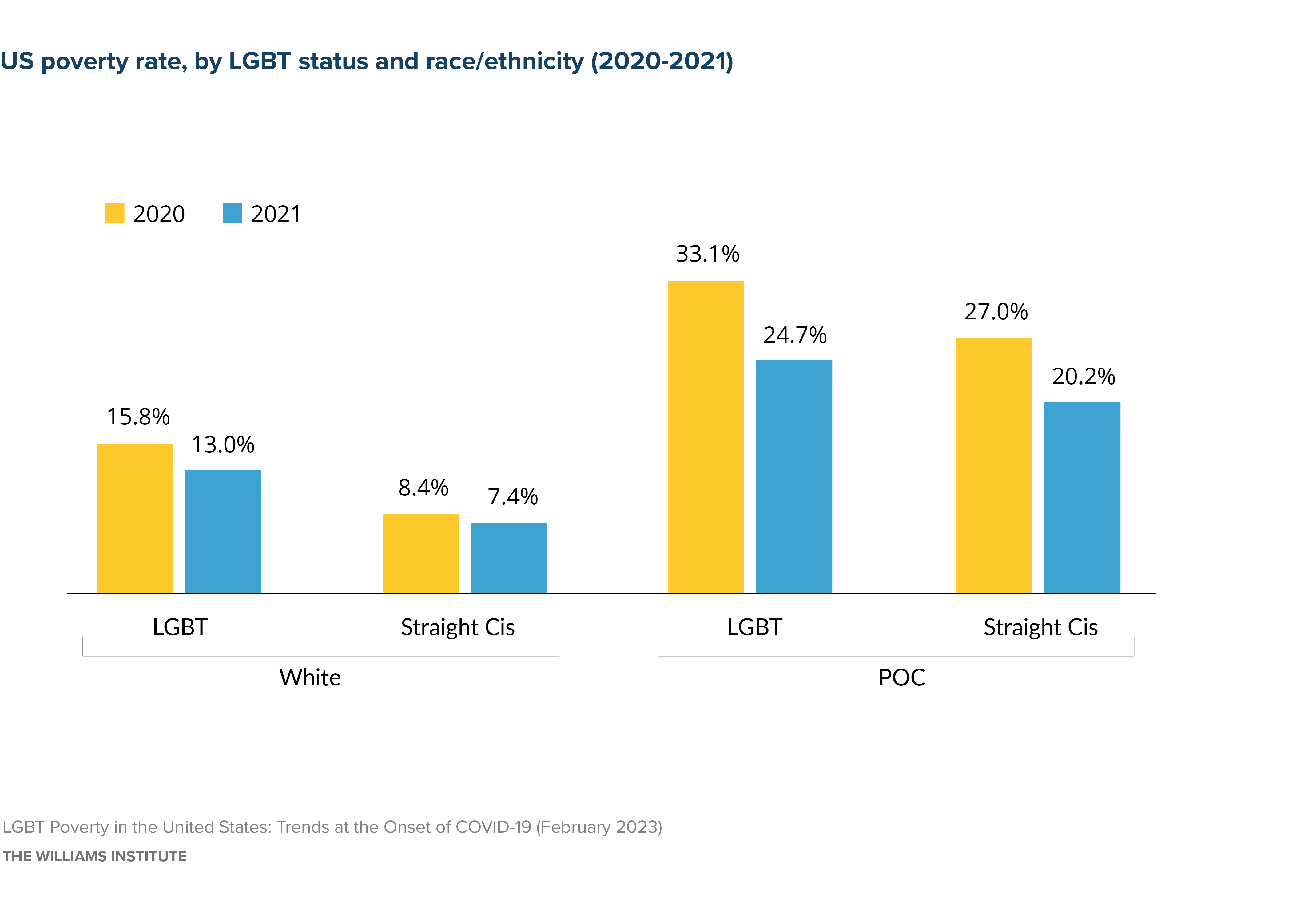Executive Summary
This brief details levels of poverty among LGBT people before and since the onset of the COVID-19 pandemic in 2020. When our last LGBT poverty report was released in 2019, data indicated an economic disparity between LGBT and non-LGBT people. Since that report, the COVID-19 pandemic hit, and a cascade of negative economic effects were felt by large proportions of the U.S. population. Our new analyses, across multiple datasets, indicate that these disparities persist—a higher percentage of LGBT than non-LGBT people have incomes below the federal poverty level (FPL). We see consistency in the relevance of LGBT status over time, pre-pandemic, during the most severe period, and since. We also demonstrate that while specific estimates differ across data sources (the U.S. Census Household Pulse Survey reports generally higher rates of poverty), the patterns among LGBT subgroups are similar.
- In 2021, we saw a dramatic decrease in the number of people experiencing poverty across LGBT and non-LGBT groups overall. The proportion of straight cisgender people experiencing poverty went from 16% in 2020 to 12% in 2021, and for LGBT people it dropped from 23% to 17%. Most notably, the change for bisexual cisgender women changed from approximately 30% in 2020 to 20% in 2021.

Source: BRFSS, 2018-2021
Note: Cis = Cisgender

Source: BRFSS, 2020-2021
Note: Cis = Cisgender
This study serves as an update to the 2019 LGBT Poverty in the United States report (which used data from 2014-2017), as well as an assessment of changes in LGBT poverty in relation to the onset of the COVID-19 pandemic—a globally historic period of time that impacted the health and economics of the world’s population. We find that LGBT economic disparities measured through household income have been evident before and since the COVID-19 pandemic. However, the actual percentage of LGBT people living in poverty decreased significantly by 2021, a year after the onset of the pandemic. The general population also saw a decrease in poverty. Research has suggested that the changes in proportions of people experiencing poverty, especially among people raising children, are likely a result of COVID-19 economic relief funding and payments provided by the U.S. government, such as the American Rescue Plan Act, which included unemployment benefits, family and childcare tax credits, and direct cash payments. These findings, and the limitation of examining economic status through a health survey, underscore the importance of adding measures of sexual orientation and gender identity to federal surveys, including the Current Population Survey (CPS), the American Community Survey (ACS), and the Decennial Census.
Download the full report


